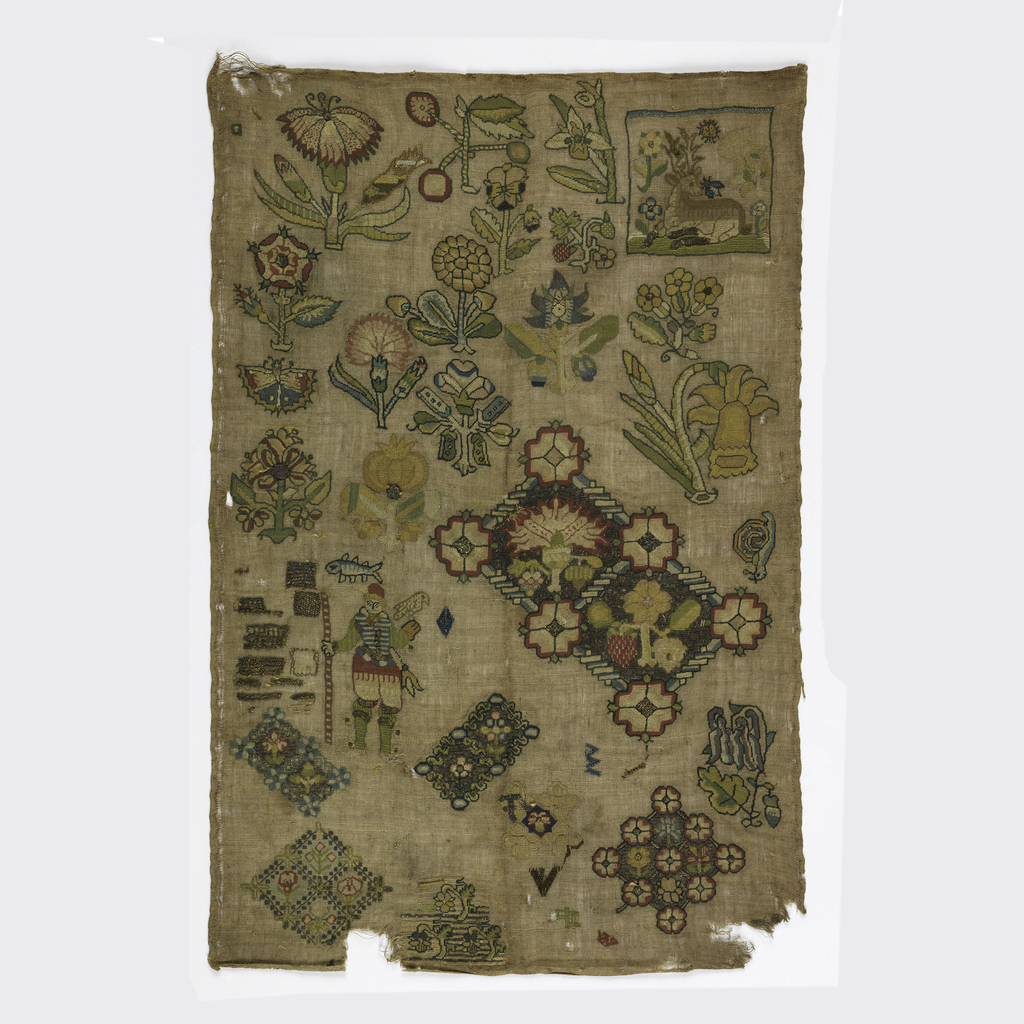This spot sampler is one of a genre of 17th century samplers that truly embodied the name. Most samplers of the period had a structure, pleasant in appearance, which incorporated pattern bands, phrases, and information about the maker such as her name and the date she completed the work. However, spot samplers like this one often contained unfinished work and bits of stitches in groups near the edges. If you look closely next to the man holding a bird, there is a group of darkly colored rectangles of metal threads worked on the fabric. These are samples of complex gold thread stitches, and are an example of instruction from a teacher. After decoding the mechanics of these stitches and teaching them in a class situation, I was struck by how my own students naturally clustered the stitch samples together on the side of their practice linen. In fact, the sizes of their practice spots mirrored the size of those on the historic pieces! They embroidered only as much as they needed to in order to understand the mechanics and preserve a reference piece. These spot samplers were not made for display, having little regard for aesthetics in their design, perhaps these spot samplers the product of an apprentice destined to embroider for a living instead of a gentry schoolgirl.
Dr. Tricia Wilson Nguyen is a teacher, historian, entrepreneur, and engineer. Her interests stretch between the embroidery and technology of the past and present.
